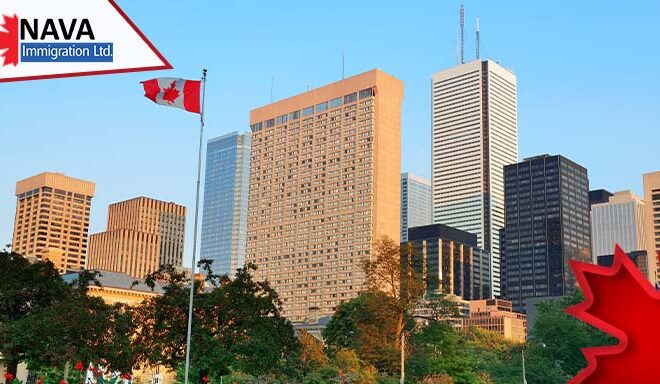Key Takeaways from Budget 2024 for Newcomers
Justin Trudeau, the Prime Minister of Canada, and various Liberal ministers have shared a significant announcement. They shared the key takeaways from Budget 2024 for newcomers, detailing what can be anticipated from the upcoming budget for this year.
Budget 2024 is scheduled to be announced in Parliament on April 16. A Budget is typically released yearly and serves to establish the general direction of the Canadian government for the upcoming year.
The Liberal government of Canada, ahead of the budget, has disclosed that notable funding has been given to initiatives aimed at alleviating Canada’s housing problems. For new immigrants to Canada, this means that it will be easier for them to find an affordable place to live, whether as a newcomer or a homeowner in the upcoming years.
Key Takeaways from Budget 2024 for Newcomers
The following sections will detail the key takeaways from budget 2024 that can be helpful for newcomers.
Renters Bill of Rights
As per the March 27 announcement, Canada is expected to present a Renters Bill of Rights in the upcoming Budget 2024. The bill will provide renters in Canada with greater resources to ensure they receive a fair rental price.
This is because the homeowners will need to provide the possible renters with previous rental rates for the unit. This will enable renters ability to bargain and ensure that they are not being exploited.
In addition, the federal government will collaborate with necessary authorities to support renters who pay their rent on time. Such renters will benefit during their credit score evaluation.
For example, paying rent on time can increase a new immigrant’s credit score. This will entitle them to a lower interest rate on a mortgage when they intend to purchase a home in Canada.
Higher Investment
Moreover, the Prime Minister also made a significant announcement concerning the investment. He noted that the new budget will contain a $15 billion investment in the Apartment Construction Loan Program. This will make the total investment $55 billion.
In Canada, the ACLP or the Apartment Construction Loan Program is a loan at lower interest rates. This will enable builders to build more apartments easily and increase overall supply nationwide.
In particular, this investment is made to construct at least 131,000 new apartments within a decade.
Furthermore, Canada aims to invest $6 billion in the Canada Housing Infrastructure Fund. This will help in increasing the development and enhancement of critical housing infrastructure. This includes various fields that support the construction of more houses, such as water, wastewater, stormwater, and solid waste infrastructure.
This decision has created some disagreement among Canada’s provinces. This is because $5 billion of the fund is dedicated to an agreement to support long-term priorities with provinces and territories. This implies that the provincial and territorial governments will be able to access this fund if they take actions to expand the housing supply as guided by the federal government.
One of these federal government conditions is that the municipalities largely adopt “four units as-of-right and allow more “missing middle” homes, including duplexes, triplexes, townhouses, and other multi-unit apartments.”
Understanding Renting in Canada as a Newcomer
Most newcomers to Canada, whether students or workers, rent their first home to live and establish themselves.
According to Census 2021 data, the increase in rentals surpassed house ownership in Canada between 2011 and 2021. Notably, it was 21.5 % vs 8.4%.
According to Statistics Canada data, one in six newcomers to Canada between 2016 and 2021 were renters, standing at 16.7%.
Notably, many of the newcomers were in “unaffordable” conditions. As per data, around 30% of pre-tax household income goes towards shelter costs.
What causes the housing shortage in Canada?
As per the Canada Mortgage and Housing Corporation (CMHC), the leading cause of the housing shortage in Canada is that the housing supply has failed to meet the demand.
The high demand is due to Canada’s fast-growing population, which is a direct result of IRCC’s high immigration targets in the past few years.
For instance, in 2023, Canada admitted 471,555 new permanent residents. In addition, more than 2 million temporary residents were welcome on work or study permits and visitor visas.
The significant population increase occurred when there was a low number of houses under construction. As per CMHC, in 2023, housing starts were down 7% compared to 2022 in areas with a population of 10,000 or above. The primary reason for this reduction is a 25% drop in single-family homes starting in 2023.
Moreover, by 2030, it is anticipated that around 9 million Canadians will retire. This will create job vacancies in high-demand fields like construction.
According to a June 2023 CIBC report, there were 80,000 vacancies in the construction sector, resulting in lower productivity. This means that house construction will take longer and cost more, leading to higher rental prices.
So, these were some key takeaways from Budget 2024 for newcomers. In addition, details about the Renters Bill of Rights, increased investments, and the renting situation in Canada.
If you are interested in immigrating to Canada but have concerns about the process and pathways, feel free to connect with our experienced immigration experts for help at NavaImmigration or send us an email at [email protected]





